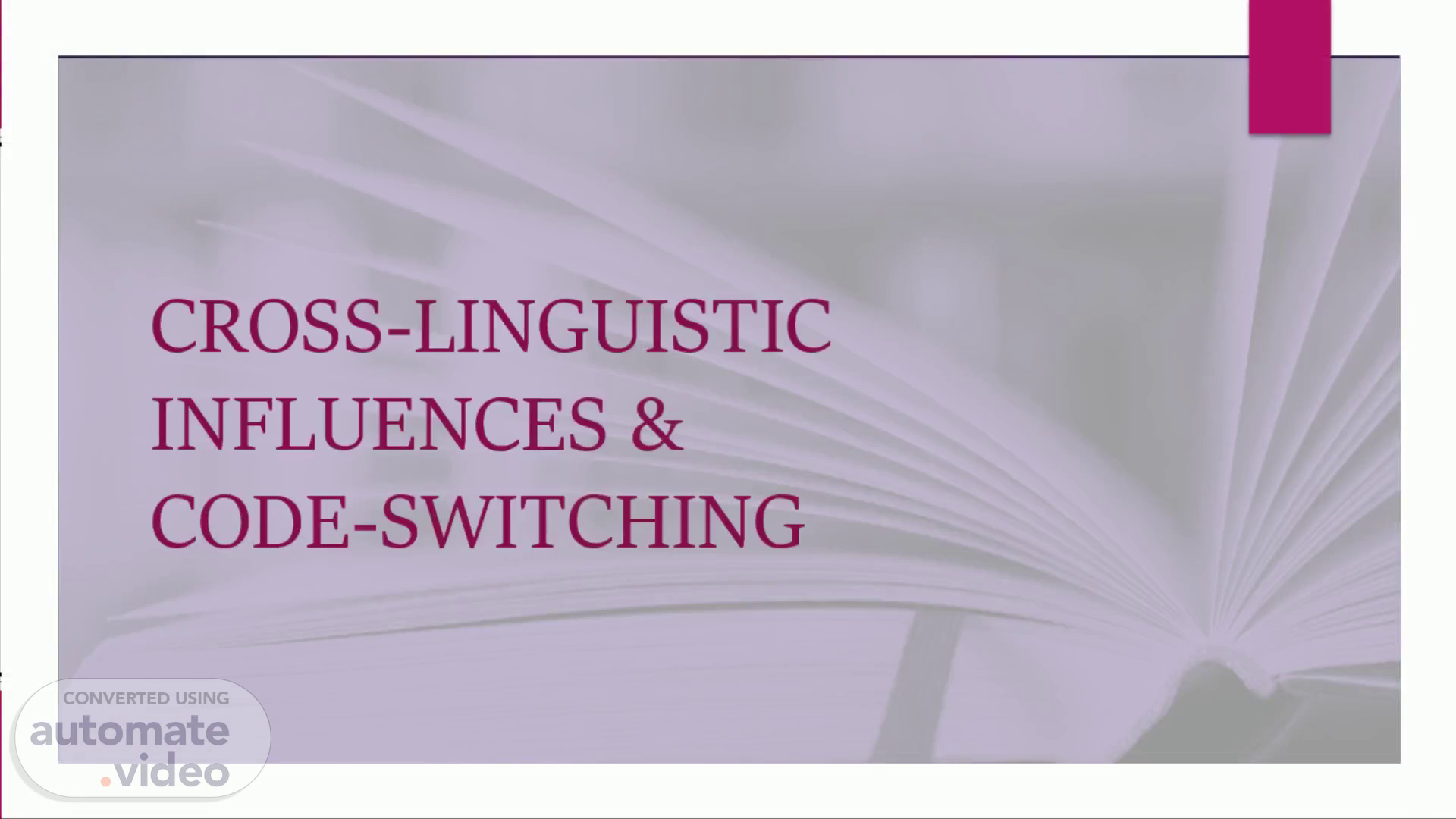
Cross-linguistic Influences & code-switching
Scene 1 (0s)
Cross-linguistic Influences & code-switching. By Sharon Penaherrera.
Scene 2 (11s)
What is Cross-linguistic Influence?. Different coloured question marks.
Scene 3 (20s)
An interaction between two languages where the grammatical structures of one language will reflect in the other language..
Scene 4 (30s)
Types of cross-linguistic influence. Cross-linguistic transfer or cross-linguistic interference.
Scene 5 (41s)
Cross-linguistic influence in Phonology. Cross-linguistic influence may impact a child’s phonology as there is a transfer in one language to another, but a child’s overall pattern is the same as that of a monolingual child. A child’s rate is often affected in which they acquire shared phonemes first rather than unshared phonemes. This results in the substitution of phonetics within the two languages..
Scene 6 (1m 0s)
Cross-linguistic influence in Morphosyntax. A bilingual child and a monolingual child show the same overall developmental patterns, there is no difference..
Scene 7 (1m 12s)
How children display cross-linguistic influence. Transfer of word patterns (English “orange juice” vs. Spanish “jugo de naranja”) Use of null or overt subjects (Spanish speakers use null subjects rather than grammatical) Copula verbs (English: “be” vs. Spanish: “ser” and “estar”) Noun phrases (English: noun phrases do not need articles vs. Spanish: using articles before noun phrase is necessary).
Scene 8 (1m 31s)
What causes Cross-linguistic influences?. Language dominance is seen in bilinguals as there is no balance of development in the two languages. Cross-linguistic influence occurs when there are similarities and differences between the two languages and is often seen in the language the child is spoken to. Cross-linguistic influences are common in dual-language learning and it is not a sign of confusion of the two languages or a necessary target for correction or remediation..
Scene 9 (1m 55s)
What is Code-switching?. Code-switching is when a speaker alternates between two or more languages in the same utterance or during a conversation. The speaker’s use of mixed elements may be phonological, lexical, or morphosyntactic..
Scene 10 (2m 14s)
Types of Code-switching. Intrasential : a shift in language made within one sentence Ex: “Mommy, mi amiga tiene mucho toys in her house!” Intersential : a shift in language made between sentences Ex: “Mama, yo tengo mucha hambre ! What are you going to make for dinner?”.
Scene 11 (2m 30s)
Reasons for Code-switching. Code-switching makes it easy for a speaker to find the right words or phrase when having a conversation. It is also used to emphasize a point, identify with a particular group, assert identity, and to attract a different audience..
Scene 12 (2m 45s)
Reasons for Code-switching. All bilingual children code-switch as it helps them fill in their lexical or grammatical gaps. The child’s age, language dominance, and social context all play a role in the extent of code-switching. It is important to remember that code-switching is not a language disorder unless there is additional evidence..